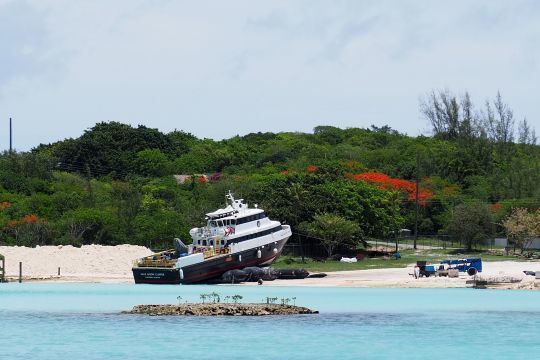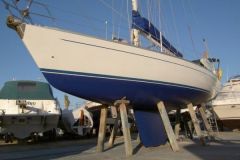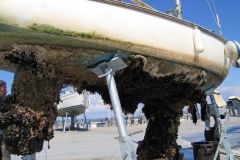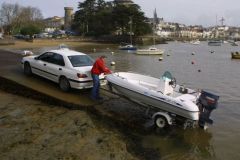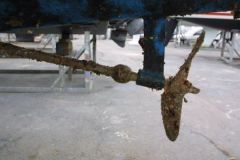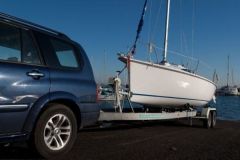Stopover in a cyclone hole
On Eleuthera, an island in the north-east of the Bahamas, there's no long list of "must-see" attractions, or other entertainment like in the more touristy Exumas. Instead, nautical wandering is practiced with all senses alert, on the lookout for the slightest element likely to offer some originality. The consumer becomes an observer, curious about everything and eager to learn something. The exercise can sometimes prove highly instructive.
This is the spirit in which Lady't Bee, our catamaran, the pleasant stopover of Hatchet Bay, on the island of Eleuthera. An unexpected and devious squall having pushed us towards its invisible entrance, we soon found ourselves anchored inside this veritable "cyclone hole". Protected by a 360-degree angle, its tiny, 30-metre-wide access channel is the only way in.
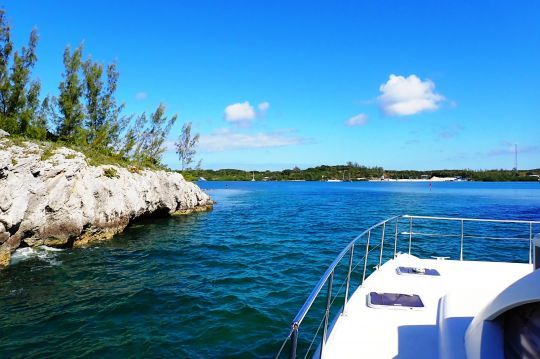
Once inside, the impression of security is total. And you start to think: "âeurosIci, the boat risks absolutely nothing". The only downside for the crew was that they quickly became bored...
A strange manoeuvre
At the far end of this sleepy bay, an original activity attracts our attention. Half Moon Clipper a cruiser assistance boat, a superb 35-meter unit that arrived a couple of hours earlier, has left its quay and is slowly making its way towards a technical area clearly under development. A motionless travel-lift and a rough outline of a concrete dock hint at the future presence of an onshore storage center for pleasure boats. A large empty quay, slightly sloping towards the liquid surface, seems to be waiting for its first customers... And this is where HMC is heading at a slow pace.
"But what on earth is he going to do there? He's going to fail..."
Water outlet on inflatable tubes
Well, thatâ??s exactly what itâ??s doing! Its bow is now over firm ground, and its propellers are in slow forward motion.
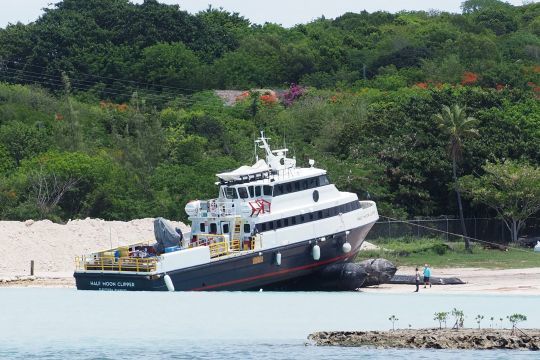
And then its wake draws a majestic sandy puddle on the surface of the wave, barely wrinkled by its eddies. Then a fork-lift truck approaches, towing behind it a kind of enormous black sausage, largely deflated. Its driver maneuvers skilfully and manages to place the monstrous flabby sausage under the boat's bun. Then, as soon as it's in the right place, it's connected to a construction compressor, which quickly gives it a respectable volume.
That's when it's easy to imagine what's coming next...
A hundred meters ahead of the ship, a sturdy electric winch unwound its cable to secure it to the bow. At the same time, a second rubber rope was placed behind the first. Still in forward gear, the canoe reared up slightly as it climbed onto the first elastic cylinder, now fully inflated. After a few tens of minutes and the addition of several more bladders, the winch takes over and begins to pull its heavy burden, which slides inexorably on its flexible cushions.
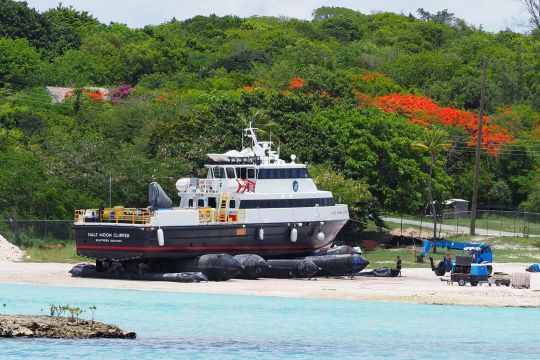
And so, by successive small actions of inflation and hauling, the ship reached its destination!
So, we wedge it in place, then set it down. Sturdy metal brackets are placed at strategic points, before compressed air is released from the large black bladders. A few minutes later, the place is cleared of all these accessories and HMC is installed in the center of the median.
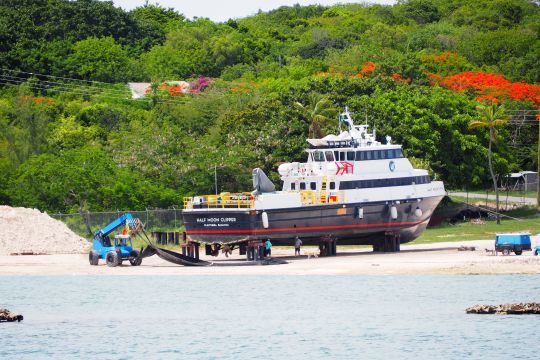
He's ready to welcome the various craftsmen and specialists who will be pampering his carène, his helices and all that sort of lively workâeuros!
All this with a winch, bicycle inner tubes and a construction compressorâeuros! Hats off to you!
